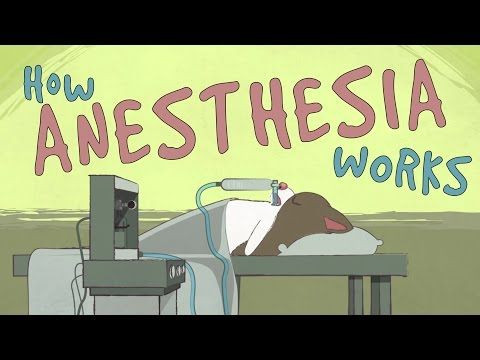Going Under: How Anesthesia Works On The Human Body

If you’ve ever had surgery, you’ve often heard the phrase “count backwards from 10,” only to wake up with the surgery already over before you got to five. Although it might seem like you were asleep, the reality is you were unconscious, couldn’t move, form memories, or feel pain — you were under anesthetics. So, how exactly do anesthetic agents work on the body?
In a TED-Ed Talk video, “How does anesthesia work?” host Steven Zheng explains anesthetic agents have long been used to ensure more and more patients survive the trauma of surgery. Anesthesiologists combine regional, inhalation, and intravenous agents to attain the right balance for surgery. These three agents service to block pain signals, so patients can be numb to the pain effects.
In regional anesthesia, the agent blocks signals from a specific part of the body to inhibit it from getting to the brain. Pain and other messages travel through the nervous system as electrical impulses. They work by setting up an electrical barricade by binding to the protein in neuron cell membranes that let charged particles in and out and lock out positively charged particles.
If you're getting major surgery, you will likely be placed under inhalational anesthetics. This agent acts on the entire nervous system, including the brain. Diethyl ether was the first common drug used in Western medicine, until doctors started to realize people didn't notice injuries they would receive under the drug’s influence.
Inhalation anesthesia is usually supplemented with intravenous anesthesia, which was developed in the 1870s. Common intravenous agents include propofol, which induces unconsciousness, and opioids like fentanyl, which reduce pain. These general anesthetics seem to work by affecting electrical signals in the nervous system.
Normally, the brain’s electrical signals act chaotic as different parts of the brain communicate with each other. It is this connectivity that keeps you awake and aware. However, if someone becomes anesthetized, those signals become calmer and more organized, suggesting that different parts of the brain are not talking to each other anymore.
There's still a lot we don't know about how this process happens. We do know several common anesthetics bind to the GABAA receptor in the brain's neurons — they hold the gateway open letting negatively charged particles flow into the cell. Negative charge builds up and starts to act like a log jam by keeping the neuron from transmitting electrical signals. The nervous system has a lot of these gated channels controlling pathways for movement, memory, and consciousness.
Figuring out how anesthetics work has allowed for the development of new and better surgical techniques every year. Although how anesthesia works still remains a medical mystery, they help doctors routinely and safely perform C-sections, reopen blocked arteries, and replace damaged livers and kidneys.
Anesthesia ensures more and more patients survive the trauma of surgery.
Published by Medicaldaily.com



























